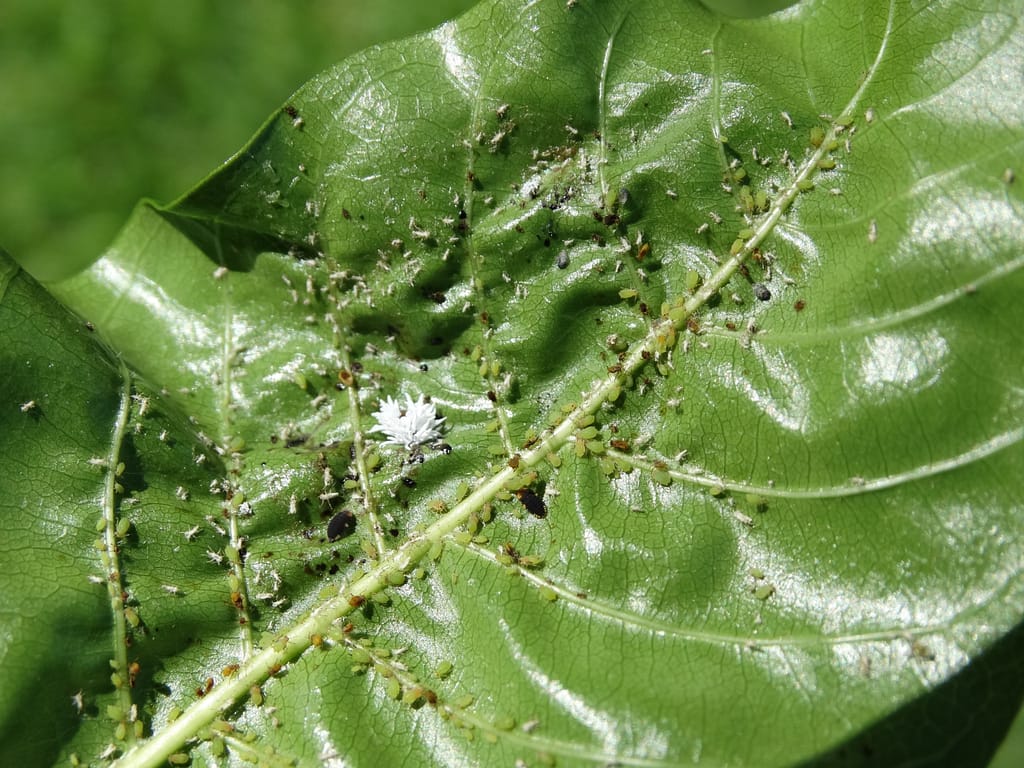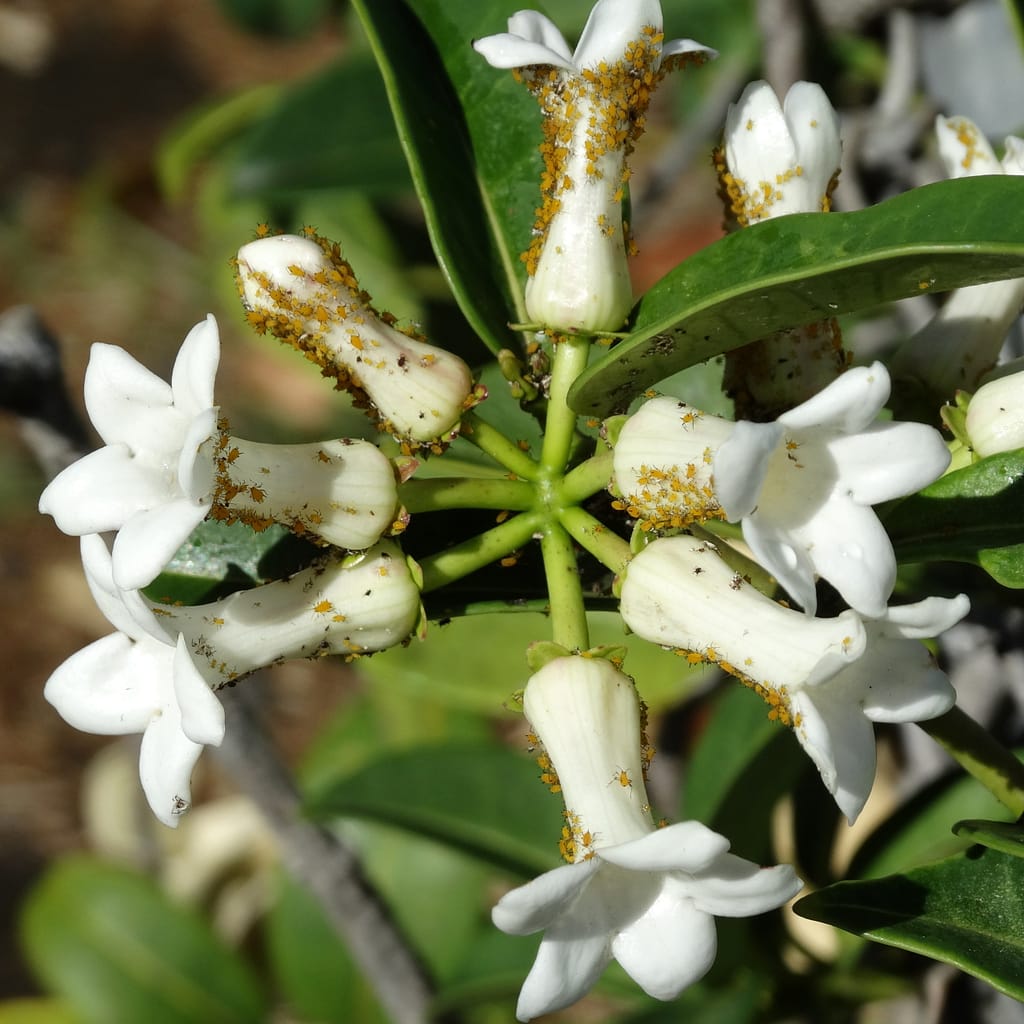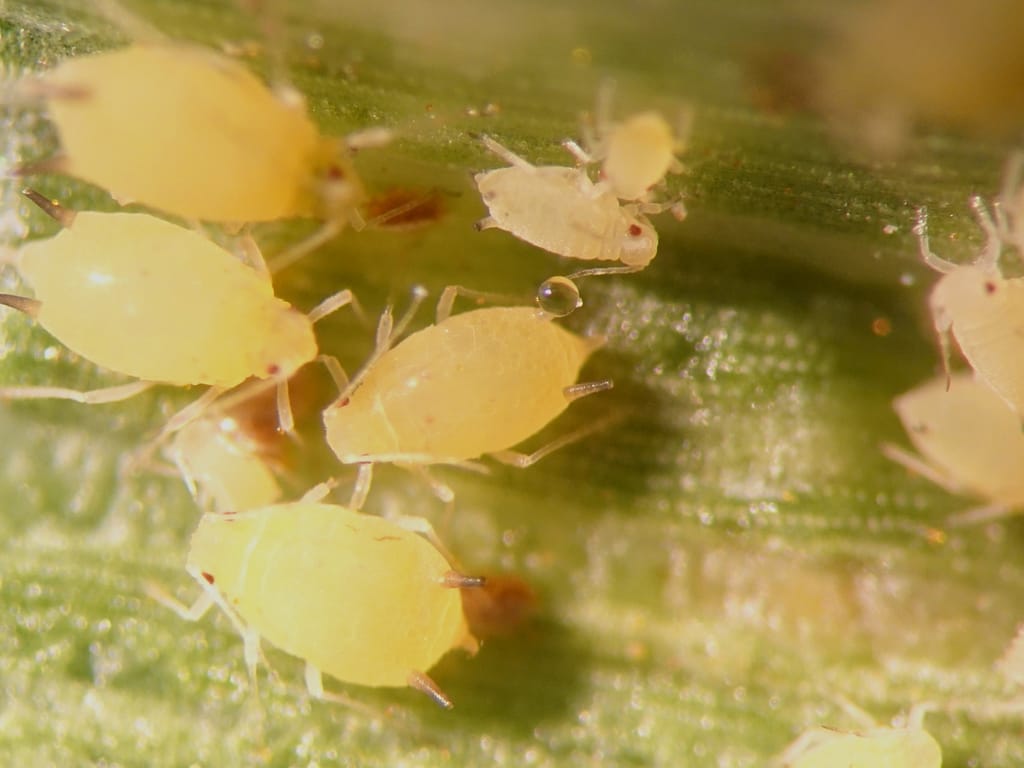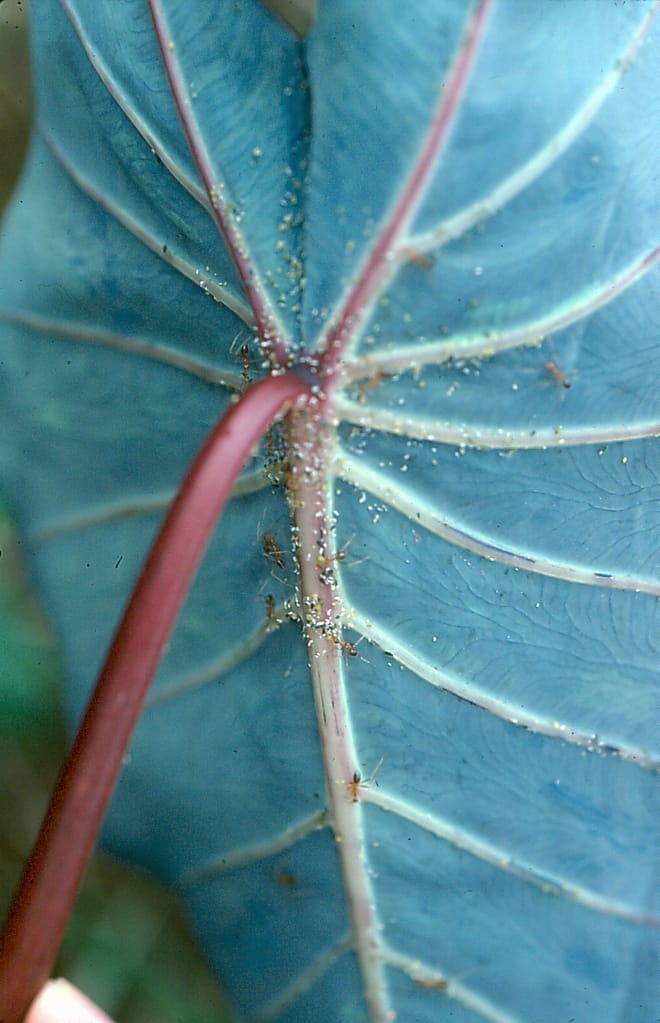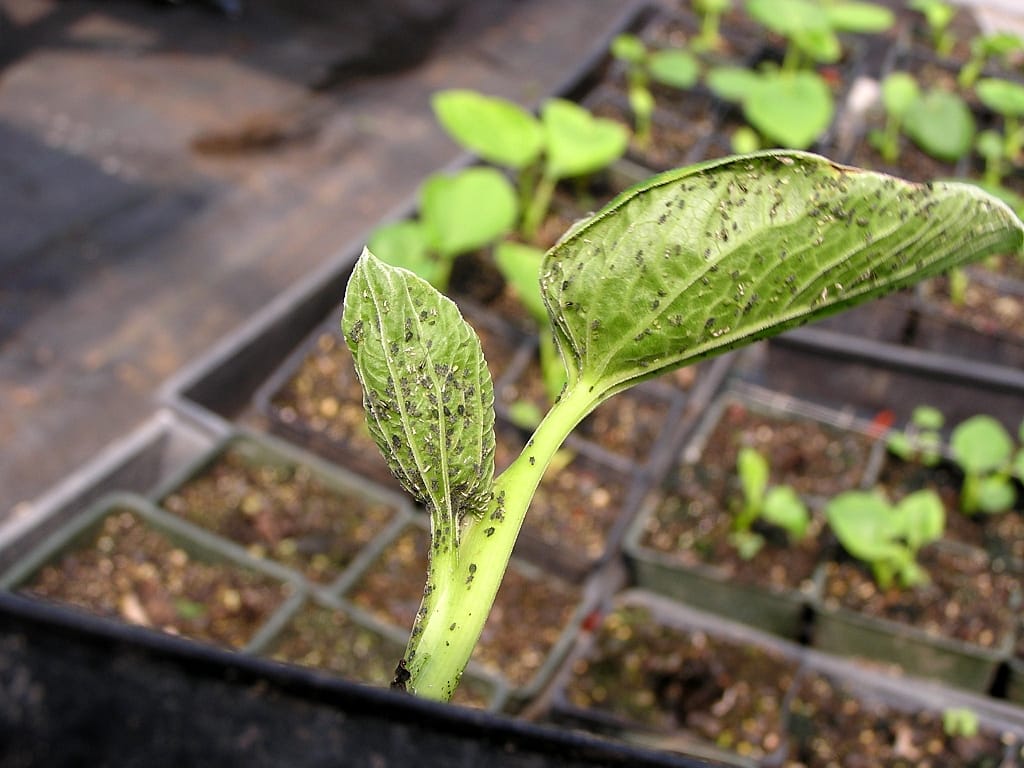What Are Aphids?
Aphids are soft-bodied insects that feed on new growth of many plants. Aphid species can appear different as their color, size, and plants they infect varies greatly. They can cause significant damage to plants if left unchecked as the population increase exponentially.
Symptoms and Identification of Aphids
Aphids are typically an 1/8″ long. Their color is typically yellow to green, but can be black, brown, white, or gray. They have 6 legs and 2 antennae on their head. Aphids typically feed on new growth or the undersides of leaves.
Symptoms of aphids include the following:
- Deformed leaves from injected toxins
- Sticky deposits called honeydew on the leaves
- Honeydew covering anything under the plant/tree (car, concrete, windows)
- Ants climbing up the tree trunk and on branches to feed on the honeydew
For images of plants with aphids scroll to the bottom for help in identifying if it is affecting your plant. If you have photos you’d like to add to the photos below you can send them to [email protected].
Life Cycle
Aphids reproduce very rapidly and the infestation can grow quickly if not managed. One adult aphid can produce up to 80 offspring in a week, and those aphids can reach adulthood and reproduce within 2 weeks. Some species will lay eggs that overwinter during the absence of deciduous leaves to feed on. They overwinter until Spring heats up and they emerge and begin reproducing again.
Management of Aphids
It first needs to be stated that the presence of aphids is not always a problem that needs to be eradicated. Large plants can handle a moderate amount of aphids with little to no damage. If you catch it soon enough you can eliminate the problem before it becomes severe. Temperature during the hotter months will help to significantly reduce the aphid population and biological control will help.
There are a lot of options to manage aphid infestations. Chemical, biological, cultural control and monitoring are all effective ways to deal with aphid manifestations. I recommend trying as many options as you can before going straight to chemical control as other methods can usually handle the problem without damaging beneficial insects in your garden and landscape.
Monitoring
Being able to detect aphids on your plants before they get out of control is the best way to avoid infestations of large proportion. Taking a weekly stroll around all of your aphid susceptible plants is a good way to catch the problem early. If you find a small amount of aphids you can either prune off the infected area, or spray it down with water to knock off the aphids that cannot get back up to the leaves. I personally spray my infested crape myrtle trees twice a year (earlier in late Spring and early Summer) and they are healthy and don’t skip a beat.
Biological Control
Lady beetles, parasitic wasps, lacewing larvae, soldier beetles, and syrphid fly larvae are all natural predators to aphids. These populations significantly decrease with the application of broad-spectrum pesticides that kill predators and pests alike. The major thing that people don’t like to hear when they come seeking an immediate solution, (I’m a millennial, I get it) is that natural predator populations don’t increase or exist without the presence of prey. Therefore, if you don’t have aphids to eat, they won’t naturally migrate to your yard, nor will they stay when you introduce them to your yard.
Cultural Control
Removing sowthistle and mustards weeds that are near vegetables or your garden is a great control for aphids. These plants are great breeding grounds for the aphids that eventually transfer to the garden. Leaving those weeds in other places can help to increase the natural presence of aphid predators, which is also beneficial.
Fertilizing with high levels of nitrogen causes plants to flush out tons of new succulent growth. These are the prime targets for aphids, and too much nitrogen can turn your garden from an average dinner to a Thanksgiving feast for the aphids. This can also be slowed down by applying fertilizer in smaller doses, longer intervals, or using slow release fertilizers.
Silver reflective mulches are effective at controlling aphids, but they need to be removed during hot temperatures in order to not burn your plants. Hot days are very common here in the high desert which makes me lean away from this option if possible.
Chemical Control
Insecticidal soaps or horticultural oil are recommended to be used first if chemical control is deemed necessary. These chemicals typically include plant-derived oils like neem or canola oil. They kill aphids by smothering them, so a thorough application is required to be effective. It may also need an additional application later if there is still a significant population after the first application. This will damage natural predators and pollinators that it comes in contact with, but will not damage any that come into contact with the plant after the solution has dried. These should also not be applied with temperatures exceed 90°F or to drought stressed plants or it can cause further damage to the plant.
Formulations of malathion, permethrin, and acephate are available for use on woody plants in the landscape, but are not to be used for food crops. These insecticides are more effective to controlling aphids than oils and soaps, but also more damaging to pollinators and beneficial insects. It has been said that mixing oils and soaps with these insecticides can reduce the harm and increase effectiveness in controlling aphids.
Toxicity
As with almost all chemicals there is an associated toxicity rating for the active ingredients of different pesticides, fungicides, herbicides, and rodenticides. Here are a few places you can learn more about their toxicity with a table of their rating and what the rating means (first is the preferred):
http://pods.dasnr.okstate.edu/docushare/dsweb/Get/Document-3591/EPP-7457web.pdf
https://extension.psu.edu/toxicity-of-pesticides

